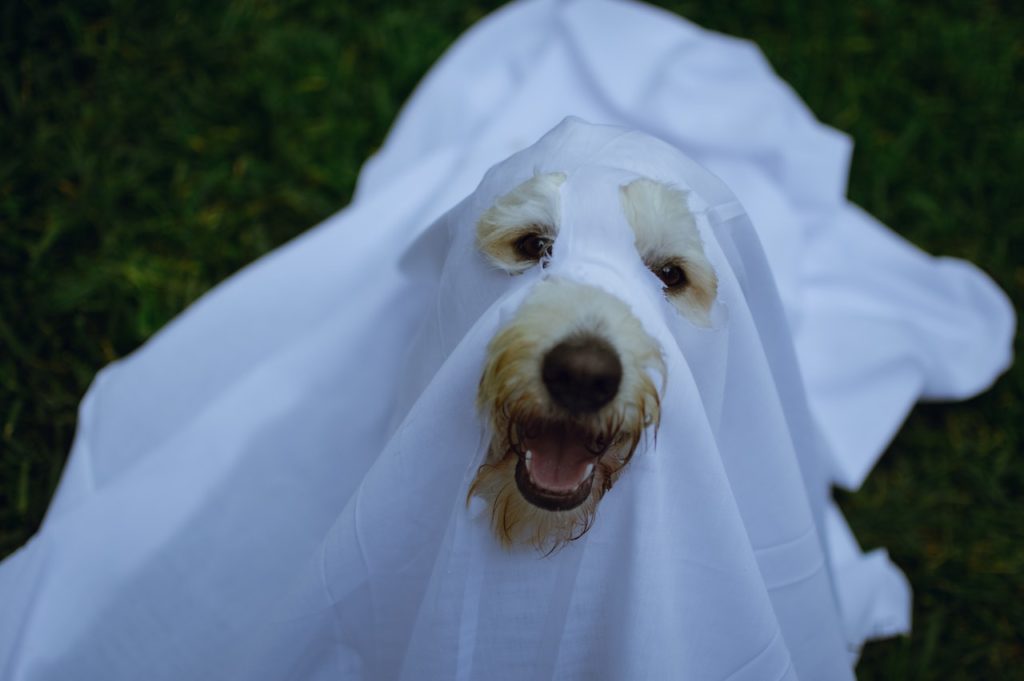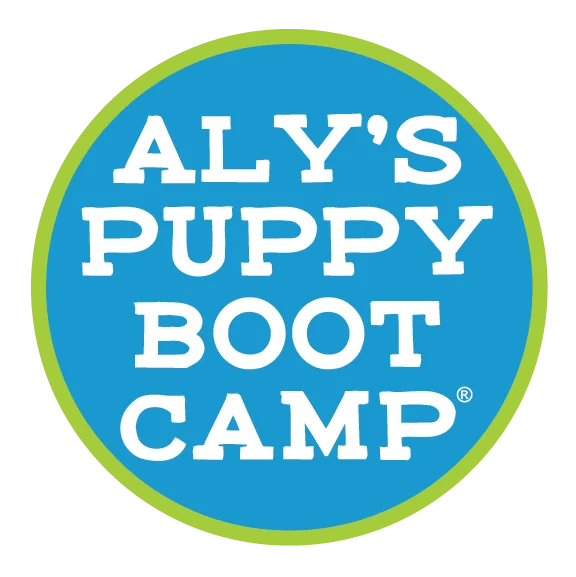One of the most popular blog series of 2021 was Tricks for Treats.
In this series of articles on Aly shared fun tricks that you can teach your dog — we promise there is nothing scary here! The tricks are easy to teach and fun to learn.
This Halloween Season we are bringing back this series, this year we will review some of the most popular tricks from last year and Aly will teach new tricks as well, so be sure to come back to the blog each week in October.

Twinkle Toes – An Easy Dog Trick
(repost from October 2021)
Why is it important to teach your dog Twinkle Toes?
This trick builds your dog’s hind end awareness, like his hind feet, pasterns, lower thighs, upper thighs, core muscles as he learns to balance! Tricks are a fun way for a dog to learn how to use their body and brain in new ways, all while building a relationship with you! The fancy term for what all these tricks are doing is proprioceptive exercises. I LOVE tricks! Tricks done right, build focus, skills, coordination (for both you and your dog!), confidence, muscle strength, stretching and let’s face it, they are ol’ fashioned FUN!
Your dog loves tricks too! Here are a few basic trick Do’s and Don’ts:
DOG TRICK DON’Ts
- Don’t rush your dog
- Don’t punish your dog if they do not execute the trick as planned.
- Don’t force your dog to do a trick
DOG TRICK DO’s
- CLICKERS: Clickers are very helpful in making a distinctive mark for the desired behavior in an incredibly timely manner. Clickers are fast and can mark the behavior instantly. Any delays between the behavior you want and the behavior you are rewarding, and there can be confusion. For example, you want your dog to lower his head and wag his tail. You may think you are rewarding the lowering of the head, but your dog thinks he’s rewarded for wagging his tail. You get the idea that timing REALLY MATTERS in tricks.
- GREAT REWARDS: Rewards are the thing your dog wants. Rewards can be high value food, a pet, a chance to run and play, really anything that your dog loves! The reward is known as the primary reinforcer.
- You are pairing the reward (primary reinforcer) with the CLICKER (the secondary reinforcer) The clicker tells the animal, “YOUR REWARD IS ON THE WAY!”
- Tricks build bit by bit. You break a trick down into small pieces, eventually putting the pieces together to create the big picture of the desired trick. For example, if you want your dog to jump into your arms, you first have to have them jump into your arms while sitting down on the ground. Then you build to jumping into your arms from sitting in a chair. Then you build to jumping into your arms while standing up. This progression can take weeks or months to complete.
- Have a light leash or leash tab (doesn’t touch the ground) on your dog so that you can guide them if they get confused.
- Make each leg of the trick journey fun and enjoyable for your dog. Embrace SHORT sessions. Choose a time of day when your dog is energetic and fresh and hungry!
We are going to help our pups learn about hind end awareness, balance and build core strength as we teach our pups to hold a position of front paws up in the air, balancing on their hind legs, and progressing to being able to move while up on their hind legs.
Strength and Balance are the focus for this trick!
The Beginning Stage: Howling at the moon position
We start the trick by having a great treat and clicker ready. Be sure to be on a surface that is not slippery!
Have your dog get into a SIT.
Place your hand with the treat directly above his nose to get his head in a ‘howling at the moon’ position.
CLICK/REWARD the second your dog gets his head up in that position. Now repeat that same motion but move that treat about an inch or two above his nose luring and rewarding any feet or foot movement OFF THE GROUND at all, no matter how small.
Placement of your hand is essential in moving the treat UP slightly above his head, NOT forward. You gradually increase the distance between his nose and the treat, to encourage him to get his feet up.
CLICK/REWARD that effort! His butt will still probably be sitting on the ground at this stage. I call that “sit pretty”.
The Middle Stage: Twinkle Toes
It’s time to add the command “Twinkle Toes”.
You are going to do the same exercise as in the beginning and add the command Twinkle Toes.
When he does it, COMMAND/CLICK/REWARD. Now, you will begin to increase the duration of his holding the up position BEFORE you COMMAND/CLICK/REWARD.
The goal is that you eventually get your pup to hold the position solidly.
The Movement Up Stage: Reverse Head Stand
It’s time for your dog to push off the hind end without jumping or leaning on you, like a headstand in reverse.
This takes muscle coordination and strength to get there. Your hand position with the treat is critical to help your dog NOT JUMP UP and to NOT LEAN ON YOU when he heads up. Smooth, gradual upward motion of your hand keeping within an inch of your dog’s nose will help guide the movement upwards. Move too fast and you’ll elicit a jump!
When your dog gets his feet moving up, continue to move your hand up a bit higher to encourage them to continue moving up.
CAUTION: Don’t hold too long at first or your dog might begin to lean on you for balance.
Again, timing of your treat movement really matters here to capture that motion up and onward before your dog stalls out. When your dog really understands the concept, it’s time to fade the lure so that he starts the TWINKLE TOES with no lure. It’s a-ok to point with your finger and encourage and as soon as he begins to move up CLICK/REWARD. As his confidence and understanding grows, you can raise your hand higher until he’s at full extension and balanced.
The Final Twinkle Toes Stage:
You are now ready to begin to get your dog to move as he is in the up position, and you can have him turn in a circle or walk forward or backward, depending upon which way his body is moving or you want him to move. Again, click/reward small efforts of movement in the up position as you gradually increase duration of the up position and direction while up.
Teaching your dog tricks is your commitment to your dog.
Don’t skip the reward at the end and always be the BEST PARTY ever when your dog executes the trick at each stage!! Effort and Willingness is always rewarded with me!
